Middlesbrough, March 2007
Six months on from first getting my Fuji Finepix E550, I thought I'd do an update on my first report. I'd been attracted to the E550 because of its fast startup time and minimal shutter lag, despite slight niggles about limited macro focussing and JPEG compression options.First off: after six months, the E550 is still the camera I carry everywhere, and buying it has proved to be a very good decision. The quicker startup/shutter release has given me the ability to catch shots I'd simply have missed with my older cameras.
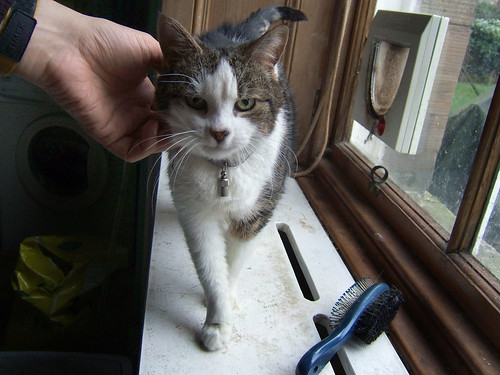
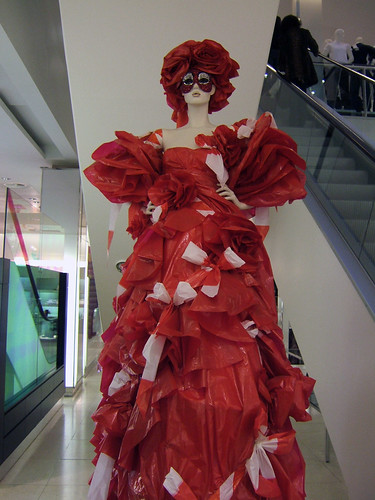
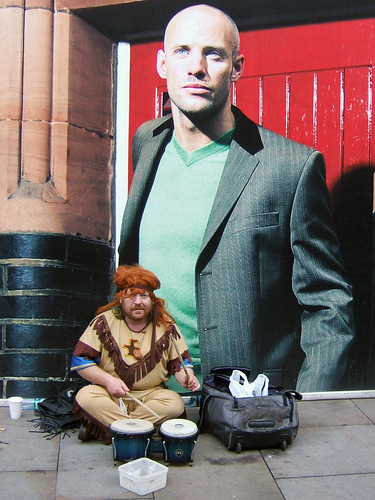
Top: Sascha the cat, Edinburgh, February 2007
Left: Harvey Nichols, Edinburgh, February 2007
Right, Manchester, February 2007
Sascha the cat here was endlessy pacing back and forth along this windowledge, but the E550 kept up with her just fine; similarly, the illicit shot of the mannequin taken in Harvey Nichols was made possible by the fact that the E550 starts up just about as quickly as a film compact. The picture of the drummer doesn't look as if it required split-second timing, but in fact it was taken on a packed shopping street; it had to be grabbed during a moment when the crowd parted.
There have been a couple of occasions when I've missed the better macro mode of my old Canons, but since I mostly use the E550 for candids, it's not really been an issue. Most of my macro stuff is done at home using the old Canon G3, but the E550 is still good enough to capture shots like these:
JPEG settings - the E550 is a 6mp camera with an option to interpolate files up to 12mp. Now for me, 6mp is more than big enough, but annoyingly, there's no high quality JPEG compression option at that size; you have to go up to 12mp to get it. I'd read on DPReview that it was worth using the 12mp mode to get optimum image quality, but after a month or so of waiting ages for the bigger files to download from the camera (and open in Adobe Bridge) I gave up and went back to 6mp. For the uses I put my pictures to, I can't say I've noticed any adverse effects.
My only real niggle about the compression settings is that at 6mp, the digital zoom option is always on. I hate digital zoom and never use it, but I can't find a way of switching it off. Although there's a step between optical and digital zoom (the indicator "sticks" for a second when you reach the threshold so you don't just slide from one to another), I always worry that I'll end up in the digital zoom range without noticing.
To counterbalance the previous niggle, the E550's flash is, for my purposes, the best flash unit of any compact I've ever seen - that is, it suits the purposes of someone who hardly ever uses flash, and certainly doesn't want it firing accidentally when he's taking candids.
The E550's flash unit is a little pop-up unit that will only ever pop up if the user chooses to switch it on by hand. It's obvious when the flash is extended and when it isn't, so there's no chance at all of it going off when you don't want it.
Flash exposure is excellent (even close up) though it does lock the camera up for a second or so while it recharges after each shot. If you use flash a lot, this system would be annoying, but as far as I'm concerned, the only way they could improve it would be to remove the flash entirely and replace it with a hot shoe.
After some initial paranoia about dynamic range*, I'm now happy to use the E550 for the sort of fine-detail, extended tonal range "pseudo medium format" type shots I used to do with my old Canons. At the lowest sensitivity setting (ISO 80), the sensor produces smooth images that convert beautifully to black & white.
*Based on nothing at all, I had the feeling that Fujis "should" be more contrasty than Canons.
*Based on nothing at all, I had the feeling that Fujis "should" be more contrasty than Canons.
If you look at the image above, the dynamic range is excellent, with detail preserved in both the highlights and the shadows areas. Up to ISO 200, there are no issues with image quality for my purposes, and noise is well controlled at ISO 400.
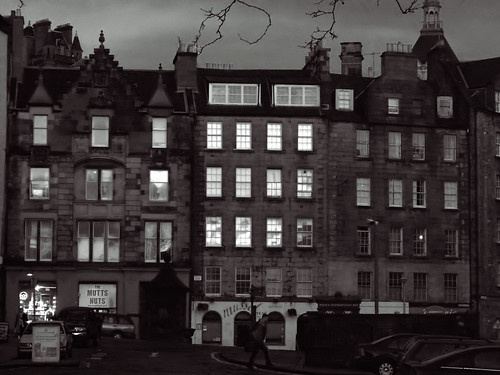
Grassmarket, Edinburgh, January 2007
The E550 has an ISO 800 setting that works at 3mp resolution only, but it's still perfectly usable, especially if noise-reduction is applied; this shot of the Grassmarket (above) was taken at ISO 800.
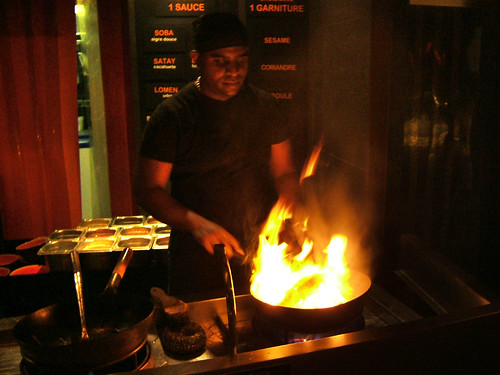
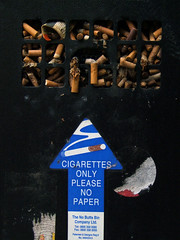
Left: Lille, December 2006
Right: Edinburgh, January 2007
The E550's automatic exposure copes well enough even with difficult situations like the wok chef (above left). For more difficult subjects like the all-black public ashtray (above right), I switched to manual and used an incident meter to take an exposure reading.
So any actual problems?
Well, the E550's controls run the opposite way to the Canons I used previously, with the result that I'm always turning things up when I mean to turn them down and vice-versa.
I love the fact that the flash defaults to "off," but others might not.
I did have a weird problem with the camera conking out in mid-exposure which was solved by replacing the really cheap NiMh rechargeable batteries I'd been using with better quality ones (Jessops own brand); battery life has increased greatly, too - from about three days between charges to about three weeks.
Because I use cameras from three different manufacturers, I don't bother with camera drivers and software; I use a card reader and Adobe Bridge to preview the images I want to download from the card. If I accidentally apply Bridge settings (say rotation) to a file on the E550's XD card, there must be some sort of metadata conflict that causes the name of the affected file to be completely rewritten and the .JPG file extension to be lost.
The result is that the JPEG preview image disappears and Bridge (and Mac OS) classify the file as "Unix Executable" rather than any readable image file format. However, all is not lost - by copying the file to the hard disk and renaming it according to the Fuji convention - DSCFXXXX.jpg - it returns to life as a fully usable JPEG. Sadly, as far as I can make out, there's no way of renaming the original copy of the file on the XD card, so that remains unreadable by the camera.
Overall, my impression of the E550 is the same as it was a few months ago - it's a very fast and flexible camera, well suited to capturing fast action and candids, albeit with the odd little quirk. If you like the look of it, consider also the replacement model, the E900, which is available at a very reasonable price on Amazon right now.
So any actual problems?
Well, the E550's controls run the opposite way to the Canons I used previously, with the result that I'm always turning things up when I mean to turn them down and vice-versa.
I love the fact that the flash defaults to "off," but others might not.
I did have a weird problem with the camera conking out in mid-exposure which was solved by replacing the really cheap NiMh rechargeable batteries I'd been using with better quality ones (Jessops own brand); battery life has increased greatly, too - from about three days between charges to about three weeks.
Because I use cameras from three different manufacturers, I don't bother with camera drivers and software; I use a card reader and Adobe Bridge to preview the images I want to download from the card. If I accidentally apply Bridge settings (say rotation) to a file on the E550's XD card, there must be some sort of metadata conflict that causes the name of the affected file to be completely rewritten and the .JPG file extension to be lost.
The result is that the JPEG preview image disappears and Bridge (and Mac OS) classify the file as "Unix Executable" rather than any readable image file format. However, all is not lost - by copying the file to the hard disk and renaming it according to the Fuji convention - DSCFXXXX.jpg - it returns to life as a fully usable JPEG. Sadly, as far as I can make out, there's no way of renaming the original copy of the file on the XD card, so that remains unreadable by the camera.
Overall, my impression of the E550 is the same as it was a few months ago - it's a very fast and flexible camera, well suited to capturing fast action and candids, albeit with the odd little quirk. If you like the look of it, consider also the replacement model, the E900, which is available at a very reasonable price on Amazon right now.
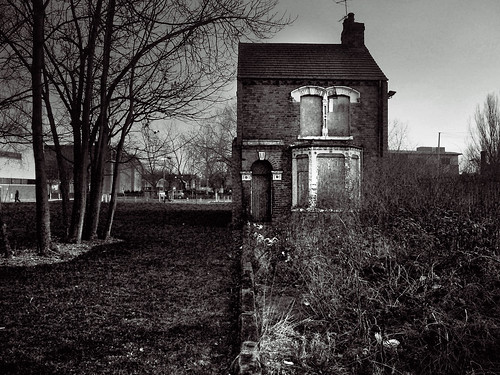


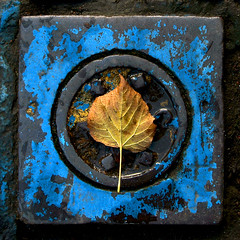
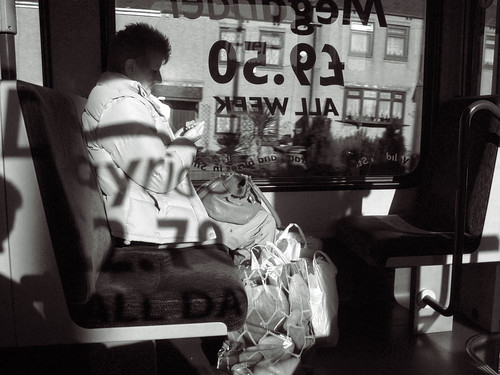
1 comment:
Thanks for this commentary - nice shots.
I haven't used my E550 for ages, and was thinking of upgrading to a GX100. Your blog has made me think twice!
Post a Comment